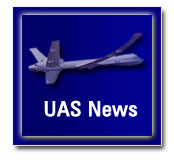Bridging the Observational Gap Between Earth and Space
Unmanned Aircraft Systems (UAS) can revolutionize NOAA’s ability to monitor the global environment, while increasing national security, individual safety, profits, and economic competitiveness for U.S. companies. UAS have the potential to fill critical observation gaps in climate change research, weather and water resources forecasting, ecosystem monitoring and management, and coastal mapping. These information gaps usually exist over remote and often dangerous areas, such as the polar regions, the mid-oceans, expansive wildlands, volcanic islands, and other remote reaches of the Earth. Manned aircraft flights are not possible in these areas due to long flight durations and hazardous conditions. From UAS regional test beds, NOAA will evaluate UAS for:
- early hurricane tracking and intensity forecasts (Gulf and Atlantic);
- climate change research (Arctic and Atlantic);
- early detection of Central Pacific storms for forecasting flash floods and water resources management (Arctic and Pacific);
- fisheries assessments and enforcement (Arctic, Pacific, Gulf, and Atlantic); and
- protection of marine sanctuaries (Arctic, Pacific, Gulf, and Atlantic).
This project engages industry affiliates that developed UAS technologies for national defense and now will apply them for the benefit of the global environment.
NOAA’s Unmanned Aircraft System Project will do the following:
- establish UAS regional test beds for research and operations for climate change, hurricanes, Pacific storms, fisheries enforcement, and protection of marine sanctuaries and endangered species;
- begin taking measurements that we are currently unable to obtain with manned aircraft; and
- save billions of dollars by increasing the accuracy of storm forecasts that can positively affect American energy (particularly the Gulf Region), tourism, airline, and other companies, as well as municipalities and federal agencies.
Long-term outcomes that benefit the public:
- improve hurricane landfall lead times;
- better determine the extent of hurricane evacuations needed, saving $640,000 per coastal mile when evacuations and other preparedness measures are not necessary;
- improve our understanding of climate to better plan for any future changes;
- develop precipitation forecasting to manage water resources and predict flooding;
- assess Arctic ice change and its impacts on ecosystems, coasts, and transportation;
- increase safety and effectiveness in fighting fires to protect people and property;
- broaden our abilities to monitor and enforce fishing regulations;
- better protect marine sanctuaries and national monuments, endangered species and other natural treasures; and
- increase accuracy of coastline mapping and monitoring.



